During rural Wisconsin summers, turtles are hard to miss. Whether they’re sitting out on a log in a lake or accidentally finding their way into your backyard, they have their few months of glory and then disappear. So, who are these mysterious critters anyway? Well, I’m glad you asked.
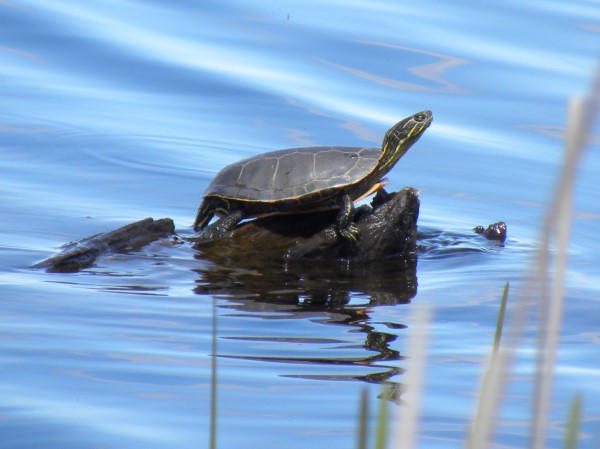
Being Wisconsin’s most common subspecies, you’ve probably bumped into a western painted turtle. Also known as Chrysemys picta belli, they boast dark green shells with striking orange features. They also have bright yellow stripes on their head and legs.5
Life in the Lake
Western painted turtles live in marshes, ponds, and shallow inlets of larger bodies of water that are thick with aquatic vegetation.5 Being omnivores, they eat a variety of aquatic organisms.1
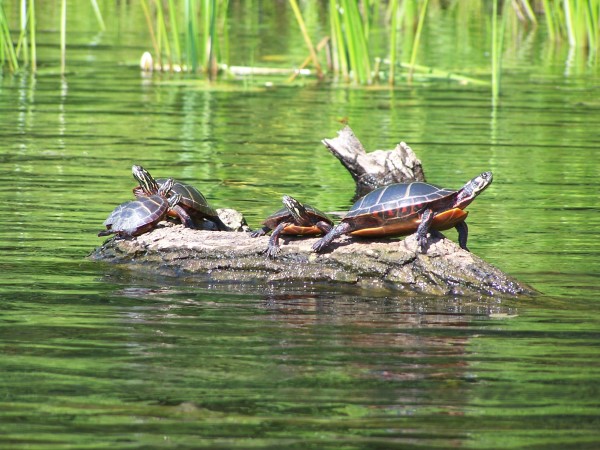
They are also cold-blooded which means they can’t regulate their own internal temperature like we do. Instead, they rely on their environment to keep them from getting too cold or too hot. You’ll often see them basking in the sun for heat. If there’s no sun, western painted turtles will pile up to keep warm.6
Weathering Winter
After mating, turtles will venture onto land to dig out a nest and lay eggs. Those eggs (2-8 typically) will hatch in late summer or early fall.1 It seems like a weird time, doesn’t it? Turtles the size of a quarter are left chilly and unprotected.
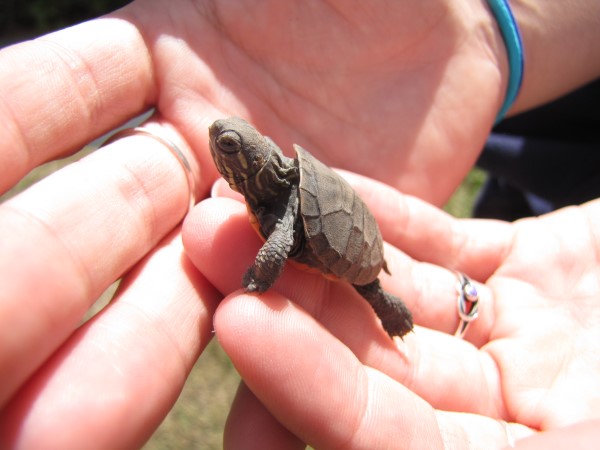
Don’t worry, they’ve got it all figured out! Hatchlings will stay comfy cozy in their nest over winter to keep warm and emerge for the first time the following spring. In fact, hatchlings can survive temperatures lower than 14 degrees Fahrenheit!6
The Car Conundrum
Unfortunately, it’s not uncommon to find a turtle in trouble here in Wisconsin.
During nesting season, female western painted turtles trek long journeys away from water to lay their eggs. Because of this, mama turtles occasionally find themselves crossing what we know as a road or highway.
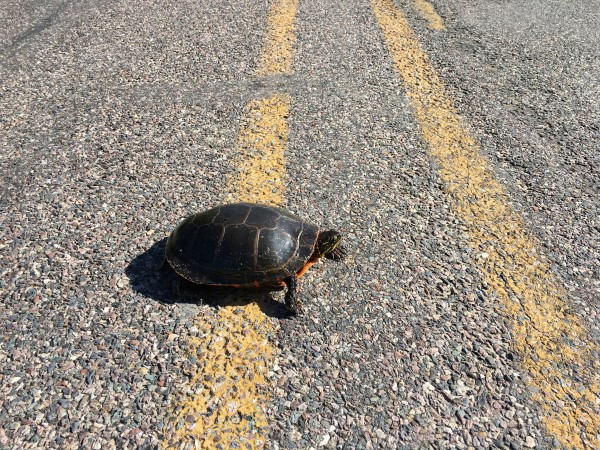
If you ever encounter this, don’t panic! Never endanger yourself or others, but if traffic conditions are safe, it’s fine to assist the turtle. Simply carry the turtle in the direction if was heading and gently place it in a safe area of vegetation2. It’ll be much happier there than in danger on the hot asphalt.
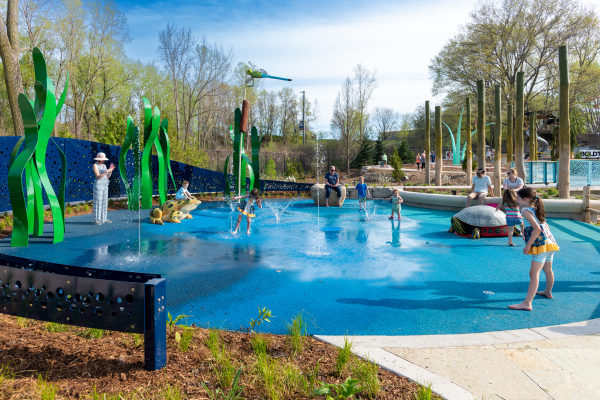
To learn more about painted turtles, visit the Fischer Family Lily Pad Splash Play in our brand-new Carol & Bruce Bell Children’s Garden! Here you’ll learn more about Wisconsin wetlands as habitat, and maybe even spot a giant painted turtle sculpture.
Sources
- Greene, Judith. “Painted Turtle (Chrysemys Picta).” Edited by Whit Gibbons, SREL Herpetology, srelherp.uga.edu/turtles/chrpic.htm. Accessed 12 June 2023.
- Kapfer, J A. “Amphibian and Reptile Frequently Asked Questions.” Wisconsin Department of Natural Resources, 2011, dnr.wi.gov/files/PDF/pubs/er/ER0671.pdf.
- “Painted Turtle.” EEK Wisconsin, www.eekwi.org/animals/reptiles/painted-turtle. Accessed 12 June 2023.
- “Painted Turtle.” Washington Department of Fish & Wildlife, wdfw.wa.gov/species-habitats/species/chrysemys-picta#desc-range. Accessed 12 June 2023.
- “Painted Turtle.” Wisconsin Department of Natural Resources, dnr.wisconsin.gov/topic/WildlifeHabitat/Herps/6795. Accessed 12 June 2023.
- “Western Painted Turtle.” Oregon Conservation Strategy, oregonconservationstrategy.org/strategy-species/western-painted-turtle/. Accessed 12 June 2023.




